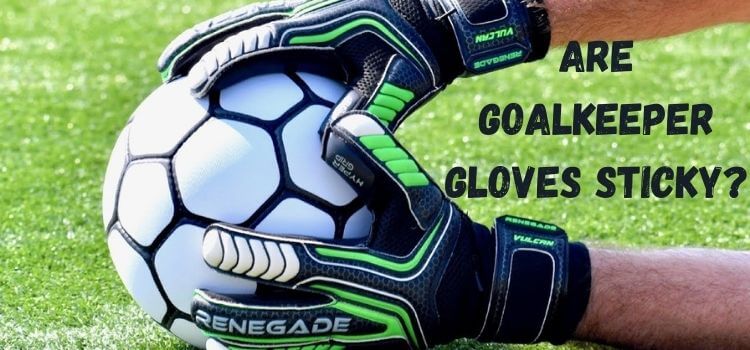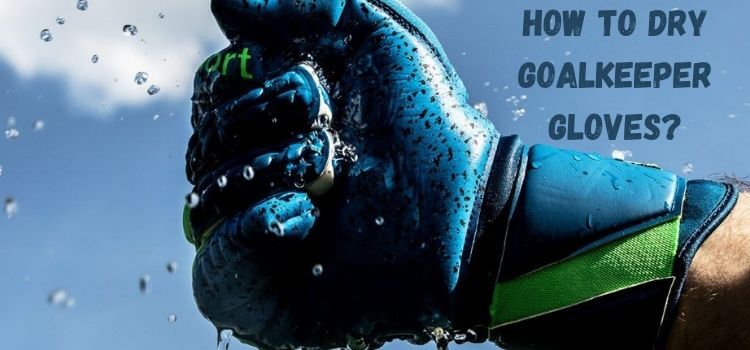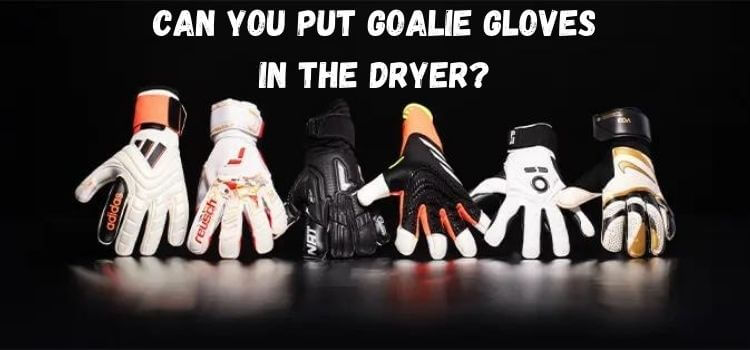As an Amazon Associate, I earn from qualifying purchases
Have you ever wondered why goalkeeper gloves are so sticky? If you’re a soccer fan or an aspiring goalkeeper, you’ve noticed how effortlessly the pros catch and hold onto the ball. This is no accident—goalkeeper gloves are designed with special features to enhance grip and control. In this article, we’ll dive deep into the stickiness of goalkeeper gloves and uncover why it’s such a crucial aspect of their design.

History of Goalkeeper Gloves
Goalkeeping has come a long way since the early days of soccer. Initially, goalkeepers used their bare hands to catch and block the ball. As the game evolved, so did the equipment.
The first goalkeeper gloves were simple leather creations, offering minimal protection and grip. Over time, advancements in materials and technology transformed these gloves into the high-performance gear we see today.
Purpose of Goalkeeper Gloves
Goalkeeper gloves serve two primary purposes: protection and grip enhancement. The padding protects the hands from the impact of fast-moving balls, while the sticky surface helps goalkeepers catch and control the ball more effectively.
Without this grip, handling the ball would be significantly more challenging, especially in wet or slippery conditions.
Material and Design of Goalkeeper Gloves
Modern goalkeeper gloves are crafted from various materials, each chosen for its specific properties. The primary material is usually latex, known for its excellent grip and flexibility.
Some gloves also incorporate synthetic materials to improve durability and performance. Design features like finger protection, wrist support, and ventilation panels further enhance the gloves’ functionality.
Why Are Goalkeeper Gloves Sticky?
The stickiness of goalkeeper gloves is not just a gimmick—it’s a fundamental aspect of their design. This sticky property significantly enhances a goalkeeper’s ability to catch and hold onto the ball.
When a goalkeeper makes a save, the sticky surface of the gloves provides additional friction, reducing the chances of the ball slipping out of their grasp.
Types of Sticky Materials Used
Latex is the most common material used for the palm of goalkeeper gloves. It’s naturally sticky and provides an excellent grip. Some gloves use a blend of natural and synthetic latex to balance grip and durability.
In recent years, synthetic materials have been developed to mimic the properties of latex while offering improved longevity.
How Stickiness is Achieved in Gloves
Manufacturers use various processes to achieve the desired level of stickiness in goalkeeper gloves. This often involves treating the latex with chemicals that enhance its natural tackiness.
Additionally, the surface of the gloves may be textured or embossed to increase friction. These manufacturing techniques ensure that the gloves perform consistently, even under challenging conditions.
Benefits of Sticky Goalkeeper Gloves
Sticky goalkeeper gloves offer numerous benefits. Firstly, they provide an improved grip, which is crucial for catching and holding the ball. This enhanced control allows goalkeepers to make more confident saves and distribute the ball accurately.
Furthermore, the added stickiness can boost a goalkeeper’s confidence, knowing they have the best possible equipment to support their performance.
Maintaining the Stickiness of Goalkeeper Gloves
To keep your goalkeeper gloves in top condition, you must maintain their stickiness. This requires regular cleaning. Rinse them with lukewarm water after each use to get rid of dirt and debris.
Avoid aggressive detergents, as they have the potential to harm latex. Proper storage is also essential; keep the gloves in a cool, dry place and avoid exposing them to direct sunlight for extended periods.
Common Misconceptions About Sticky Goalkeeper Gloves
Several things could be improved about the stickiness of goalkeeper gloves. Some people believe that the stickiness is akin to cheating, but in reality, it’s a standard feature across all levels of play.
Another misconception is that stickier gloves are less durable. While it’s true that high-grip latex can wear out faster, proper care can extend the life of your gloves significantly.
Top Brands for Sticky Goalkeeper Gloves
Several brands are renowned for their high-quality goalkeeper gloves. Adidas, Nike, and Puma are among the top choices for professionals and amateurs alike.
These brands invest heavily in research and development to produce gloves that offer the best combination of grip, comfort, and durability.
It’s recommended that you test a few brands to determine which one best suits you, as each one has its distinct features and innovations.
Professional Goalkeepers and Their Glove Preferences
Many professional goalkeepers are very particular about their gloves. They often have custom-made gloves tailored to their specific needs and preferences.
For example, some goalkeepers prefer a tighter fit for better control, while others opt for additional padding for extra protection. Interviews and quotes from top goalkeepers can provide valuable insights into what makes a great pair of gloves.
DIY Methods to Improve Glove Stickiness
If your gloves are losing their stickiness, there are some DIY methods you can try. One popular solution is to clean the gloves with a mixture of water and a small amount of dish soap, followed by a rinse with plain water.
Another method is to use a specialized glove wash product designed to restore the latex’s natural tackiness. However, these methods can have mixed results, so proceed with caution.
Impact of Weather on Glove Stickiness
Weather conditions can significantly impact the stickiness of goalkeeper gloves. In wet conditions, the gloves can become slippery, reducing their effectiveness. Conversely, in arid conditions, the latex can dry out and lose its tackiness.
To mitigate these effects, some goalkeepers use glove conditioners or sprays designed to maintain optimal grip in varying weather conditions.
Conclusion
In conclusion, the stickiness of goalkeeper gloves is a crucial feature that enhances grip and control, allowing goalkeepers to perform at their best. Understanding the intricacies of these gloves, from the materials used to the maintenance required, can help you make an informed choice and ensure your gloves last as long as possible. The correct gloves can make all the difference in the world, whether you are a novice or an experienced player.
Frequently Asked Questions (FAQs)
It’s best to clean your gloves after every use to remove dirt and maintain their stickiness.
No, avoid harsh detergents. Use lukewarm water and mild soap or a specialized glove cleaner.
Replace your gloves when the latex starts to wear out, and the grip is significantly reduced.
Not necessarily. The best gloves for you depend on your personal preferences and playing conditions.
Yes, using glove-wash products or DIY methods can help, but results may vary.
Read Our More Articles
- Can You Wash Goalie Gloves for Maximum Protection?
- How to Break in a Goalie Glove: A Quick and Easy Guide
- How to Make Goalie Gloves Sticky: A Beginner’s Guide
As an Amazon Associate, I earn from qualifying purchases


